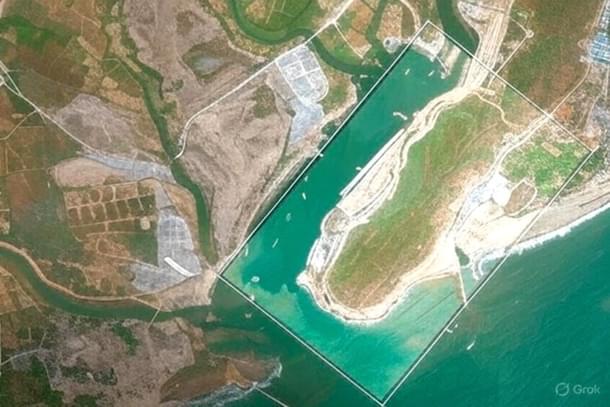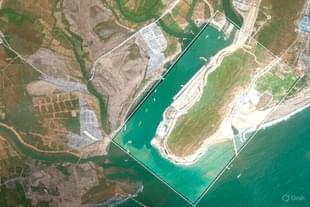Defence
As Nuclear Submarine Fleet Grows, India Set To Operationalise Dedicated Base With Underground Bunkers By Next Year
Swarajya Staff
Apr 07, 2025, 12:20 PM | Updated 12:23 PM IST
Save & read from anywhere!
Bookmark stories for easy access on any device or the Swarajya app.


India is preparing to operationalise INS Varsha, a dedicated naval base for nuclear-powered submarines, on the eastern coast near Rambilli in Andhra Pradesh by 2026, a report in The Times of India says. The high-security facility, part of the long-planned Project Varsha, is designed to support India’s growing fleet of nuclear submarines and enhance the survivability of its sea-based deterrent.
Located around 50 kilometres south of Visakhapatnam, the new base includes underground pens, extensive tunnel systems, and both inner and outer harbour facilities. The inner harbour is reportedly complete, while work continues on breakwaters and jetties for the outer harbour. The strategic location allows submarines to discreetly access deep waters of the Bay of Bengal, minimising exposure to surveillance.
The underground pens at INS Varsha significantly enhances the survivability and secrecy of India’s nuclear-powered ballistic missile submarines. In the event of a counterforce strike—where an adversary attempts to eliminate India’s nuclear arsenal in a preemptive attack—these hardened, subterranean shelters protect the submarines from detection and destruction, ensuring the continuity of India's second-strike capability.
By enabling concealed entry and exit routes to deep waters, the facility allows SSBNs to remain undetected, thereby reinforcing the credibility of India’s sea-based deterrent and the resilience of its nuclear triad.
The base is expected to be commissioned next year, with further phases allowing future expansion. Once complete, it will provide logistical and operational support to India’s fleet of SSBNs (nuclear-powered ballistic missile submarines), which form the underwater leg of the country’s nuclear triad.
The development coincides with India’s plan to commission INS Aridhaman, its third SSBN, later this year. Displacing around 7,000 tonnes, Aridhaman is expected to carry more K-4 missiles — with a range of 3,500 kilometres — than the SSBNs currently in service, INS Arihant and INS Arighat. In November 2024, India launched its fourth SSBN, which boasts approximately 75 per cent indigenous content. More SSBNs, significantly larger than those built so far, are in the pipeline.
The Cabinet Committee on Security has additionally approved the construction of two 9,800-tonne nuclear-powered attack submarines (SSNs), with eventual plans for six. Unlike SSBNs, these boats be equipped with conventional weapons for strike and escort roles.
On the western coast, the expansion of the Karwar base under Project Seabird continues in parallel. Once complete, it will be capable of hosting 50 warships and submarines, along with 40 auxiliary vessels. It will also include a dual-use air station, a new dockyard, and multiple dry berths.
Together, Projects Varsha and Seabird mark a significant scaling up of India’s naval infrastructure. While progress has taken over a decade, the developments are viewed as crucial for enabling dispersed basing, sustained undersea operations, and long-term force modernisation.





